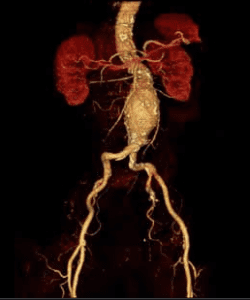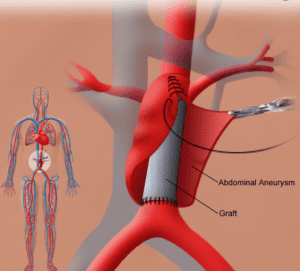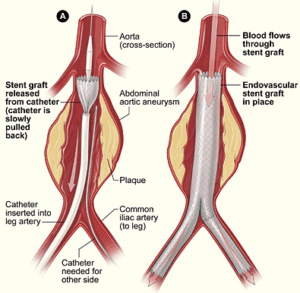Last month, I explained what an aortic aneurysm is, how it can be detected, its presentation and risk factors.

How Is It Diagnosed?
An abdominal aortic aneurysm can be diagnosed with the help of an ultrasound, a safe, painless test that does not involve any radiation. If confirmed and found to be larger than 5 centimeters, the next step is getting a CT scan with IV dye, which provides useful information regarding the anatomy and is helpful in planning a repair.
Treatment
There are several options for repair.
If an aneurysm is small, then it does not need to be repaired. However, it’s important that the patient stop smoking, make changes to medications and get regular scans to make sure it’s not increasing in size at a rapid pace.
For aneurysms larger than 5.5 centimeters, or those increasing in size at a rapid pace or causing pain, the options would be to repair it by traditional open surgery and placing a graft, or going for the newer, minimally invasive way of endovascular stent grafting — both of which can be done by a vascular surgeon.


